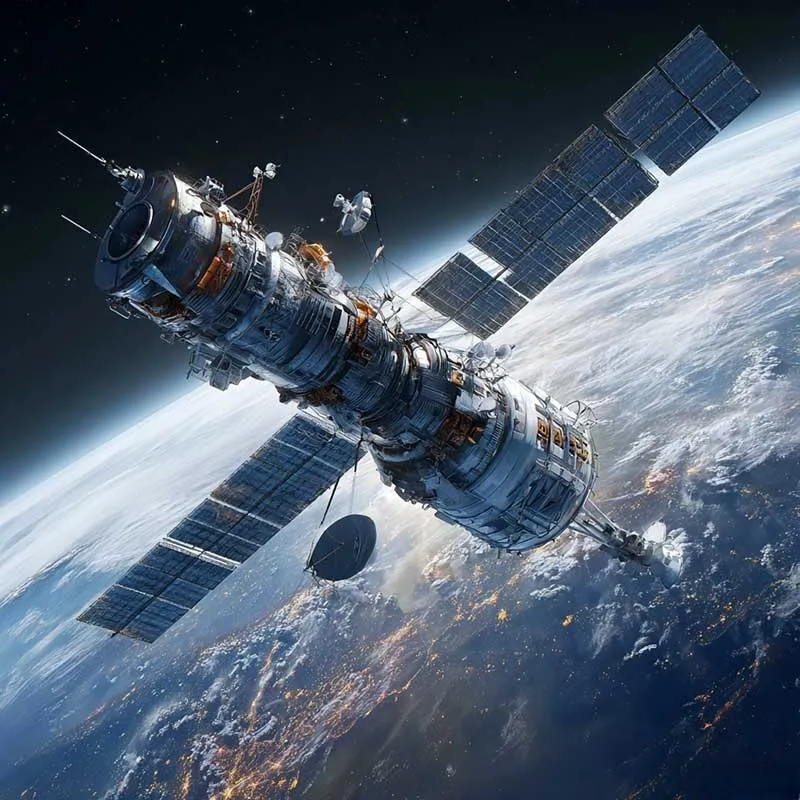In the era of Digital China, Satellite IoT has become a new engine linking the sky and the earth, connecting everything. With the Ministry of Industry and Information Technology (MIIT) issuing the Notice on Launching the Commercial Trial of Satellite IoT Services, China’s satellite IoT industry is entering a fast-track stage.
This policy is not just a document—it’s a declaration that marks the beginning of large-scale, secure, and replicable commercial development for Satellite IoT.

1. Policy Momentum: From “Available” to “Commercially Viable”
The key phrase in this policy is “commercial trial.”
In the past, satellite communications mainly served national defense, emergency response, and aerospace tasks. Today, as low-orbit constellations grow and terminal costs drop, Satellite IoT is becoming commercially practical.
The policy’s focus on replicable business models and secure supervision systems shows that the government is now emphasizing sustainable industrialization rather than just technical feasibility.
It is a major shift—from “usable” to “affordable” and “scalable”—and it will stimulate innovation, attract investment, and drive a healthy ecosystem.
2. Technology Landscape: Building a Seamless Sky-to-Earth Network
The core of Satellite IoT lies in the complete chain of “Satellite – Ground – Device – Cloud – Application.”
At the satellite level, Low Earth Orbit (LEO) systems offer high density and low latency; Medium (MEO) and Geostationary (GEO) satellites provide global coverage and relay support.
On the ground, gateways and base stations form an integrated network. At the device level, low-power terminals and dual-mode (satellite + cellular) modules allow ordinary sensors to “talk to the sky.”
With cloud platforms, data is not only transmitted but also processed intelligently—through real-time scheduling, visualization, and AI analysis.
Together, these layers create a global, reliable, and smart sensing network.
3. Expanding Applications: Connecting the Unreachable
In areas where traditional networks fail, Satellite IoT provides a digital lifeline.
- Agriculture & Ocean: vessel tracking, weather monitoring, and cold-chain logistics.
- Energy & Mining: pipeline safety, remote well-site monitoring, and worker positioning.
- Transportation & Logistics: fleet tracking, railway and aviation management.
- Emergency & Safety: communication during earthquakes, floods, and fires.
Through these “invisible” links, Satellite IoT brings visible safety, efficiency, and resilience to industries that depend on reliable connectivityz
4. Business Models: From Selling Connections to Selling Capabilities
As the ecosystem matures, Satellite IoT is shifting from basic connectivity sales to capability as a service.
Companies now provide complete end-to-end solutions—hardware terminals, satellite links, cloud platforms, and SaaS applications.
This “IoT-as-a-Service” model enables flexible pricing by message count, data priority (QoS), or latency needs.
Collaboration is also deepening: satellite operators, module makers, cloud providers, and system integrators are co-creating an open, standardized ecosystem.
The future success of Satellite IoT depends on three pillars—scalability, ecosystem synergy, and regulatory compliance.

5. Security and Regulation: Building a Safe and Trustworthy Foundation
Security is a cornerstone of Satellite IoT commercialization.
- Identity: device registration, certified modules, and trusted hardware.
- Data: end-to-end encryption, national cipher algorithms, and minimal data collection.
- Platform: multi-tenant isolation, threat detection, and emergency response drills.
- Compliance: sandbox-based supervision and graded management to ensure safety.
Only with a secure and auditable system can Satellite IoT move steadily toward sustainable growth.
6. Ecosystem and Standards: Driving Growth Through Openness
The industry’s maturity relies on unified standards and open collaboration.
Hardware-level consistency testing, platform API normalization, and third-party certification form the foundation of trust.
An open ecosystem allows interoperability—one module connecting multiple satellites, one platform supporting many devices.
This is how Satellite IoT will achieve global coverage and cross-network integration in the near future.
7. Outlook: From Connectivity to Intelligence
Satellite IoT is not just a technological upgrade—it is reshaping global communication patterns.
In the short term, government and energy sectors will lead with large-scale lighthouse projects.
In the medium term, as dual-mode terminals and dense constellations expand, cross-border IoT and asset management will become mainstream.
In the long term, Satellite IoT will merge with AI, big data, and blockchain, creating an intelligent infrastructure where every object is connected, sensed, and optimized.
8. EELINK Communication: Making Smart Connectivity Everywhere
In this new era of universal connectivity, EELINK Communication has been committed to applying wireless communication technologies to the Internet of Things.
With over 20 years of experience in R&D and manufacturing, EELINK provides remote monitoring platforms for temperature, humidity, and positioning—widely used in asset management, vehicle tracking, insurance telematics, and cold-chain logistics.
EELINK believes that innovation is the key to intelligent connection. Through continuous R&D, we make devices “speak,” data “come alive,” and connectivity truly serve people’s efficiency and safety.
Our mission is simple yet powerful—to enable a smarter, more connected world where every transmission becomes a bridge between people, things, and intelligence.
Satellite IoT is reshaping the world at unprecedented speed.
And EELINK Communication, with its deep expertise and passion for innovation, is helping make that connected future real—one intelligent link at a time.
